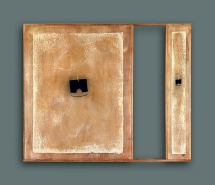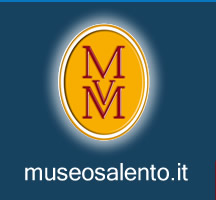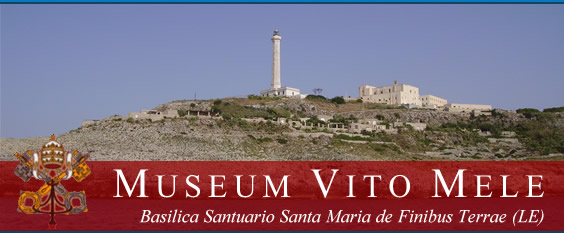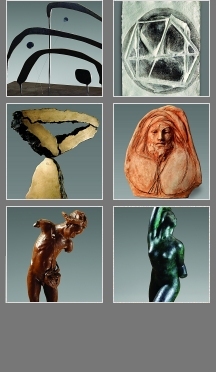|
Nasce a Castrignano del Capo (Le) nel 1958.
Le iniziali esperienze figurative sono caratterizzate
da una pittura di derivazione espressionista,
che trae ispirazione dalla realtà della
sua terra: la Puglia. Tiene le prime personali
agli inizii degli anni Settanta: in
questo periodo ottiene la maturità artistica
e frequenta, successivamente, i corsi di scenografia
presso l’Accademia di Belle Arti di Lecce.
È qui che incomincia a scoprire la scultura,
il nuovo linguaggio che - attraverso una lunga
ricerca materica - gli consentirà una risolutiva
concezione spaziale. Le opere degli anni Ottanta
nascono, verosimilmente, da questo percorso: “l’istituzione”
della forma e il conseguente rapporto tra orizzontalità
e verticalità, sono il fulcro teorico che
sta alla base della loro creazione. Queste scultureinstallazione
occupano lo spazio come se fossero delle quinte,
in una sorta di “spettacolarità scenica”
che le porta ad interagire con
l’ambiente circostante e con gli uomini che
in esso si muovono. Alla fine degli anni Ottanta
la ricerca si evolve, incentrandosi sul rapporto
tra le culture dell’antico Mediterraneo e
gli eventi artistici del nuovo millennio.
Con il trasferimento a Varese, il linguaggio artistico
di Pizzolante si arricchisce, anche grazie all’impiego
di nuovi materiali, e dal loro uso combinato.
Intensa, negli ultimi anni, è l’attività
espositiva, con partecipazioni a rassegne nazionali
e internazionali a Parigi, Lugano, Milano, Mantova,
Savona, Lamezia Terme, Bad Voslau (Austria), Girona
(Spagna), Caen (Francia).
Tra le ultime mostre ricordiamo la collettiva
del 2004 “Generazione anni '50” al Museo
d'Arte Moderna a Gazoldo degli Ippoliti (Mantova).
|

L’EREMO,
1995
carta su tavola e ottone (paper on board
and brass), cm. 100x84
|
|
|
|
|
Antonio Pizzolante was born in 1958. His
early work is characterised by painting derived
from expressionism and draws its inspiration from
his homeland, Puglia. He held his first one-man
shows in the ‘70s. In this period he passed
his school leaving certificate in art and went
on to study scenography at the Lecce Accademia
di Belle Arti. Here he began to discover sculpture,
a new language which, through experimentation
with materials, led him to a decisive spatial
conception. The ‘institution’ of form
and the consequent relationship between horizontality
and verticality is the theoretic fulcrum underlying
the works he created in the ‘80s. These installation-sculptures
occupy space as if they were the setting for a
spectacular scene which makes them interact with
their surroundings and with the people moving
around them. At the end of the ‘80s he went
on to
concentrate on the relationship between ancient
Mediterranean culture and artistic events in the
new millenium. With his move to Varese, Pizzolante’s
artistic language was further enriched thanks
to the use of new materials and combinations of
them. He has taken part in many shows in Italy,
and abroad in Paris and Caen, Lugano, Bad Voslau
in Austria, and Girona in Spain. He took part
in the 2004 collective exhibition Generazione
anni ‘50 at the modern art museum in Gazoldo
degli Ippoliti in the province of Mantova.
.
|





